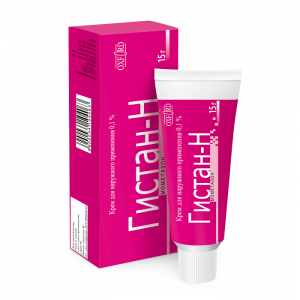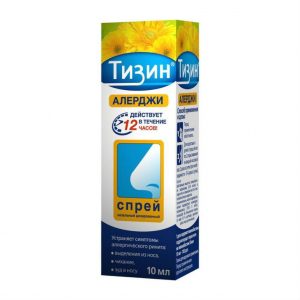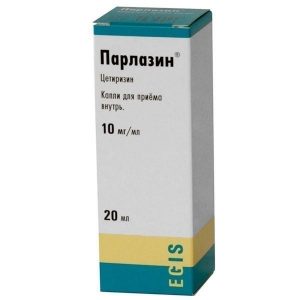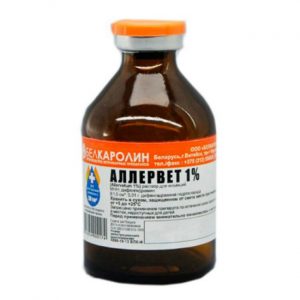Description
Latin name
ELCET
Release form
film-coated tablets
Pharmacological action of
Pharmacotherapeutic group of
H1 histamine receptor blocker (antiallergic agent).
ATX code: R06AE09
Pharmacological properties of
Pharmacodynamics of
Levocetirizine – the active substance of the drug Elcet is the R-enantiomer of cetirizine, a powerful and selective histamine antagonist that blocks H] -histamine receptors.
Levocetirizine affects the histamine-dependent stage of allergic reactions, and also reduces the migration of eosinophils, reduces vascular permeability, and limits the release of inflammatory mediators.
Levocetirizine prevents the development and facilitates the course of allergic reactions, has antiexudative, antipruritic effect, practically does not have anticholinergic and antiserotonin effects. In therapeutic doses, it has almost no sedative effect.
Pharmacokinetics
The pharmacokinetic parameters of levocetirizine vary linearly.
Suction.
After oral administration, the drug is rapidly and completely absorbed from the gastrointestinal tract. Eating does not affect the fullness of absorption, although it reduces its speed. The maximum concentration (Stax) in blood plasma is reached after 0.9 hours and is 270 ng / ml, the equilibrium concentration is reached after 2 days.
Distribution of
Levocetirizine is 90% bound to plasma proteins. The volume of distribution (Vd) is 0.4 l / kg. Bioavailability reaches 100%.
Metabolism
In small quantities (< 14%) is metabolized in the body by N- and O-dealkylation (unlike other antagonists of H - histamine receptors, which are metabolized in the liver using a system of cytochromes) with the formation of a pharmacologically inactive metabolite. Due to the insignificant metabolism and lack of metabolic potential, the interaction of levocetirizine with drugs seems unlikely. Excretion The half-life (Tm) in adults is 7.9 ± 1.9 hours. In young children, the half-life is shorter. In adults, the total clearance is 0.63 ml / min / kg. About 85.4% of the accepted dose of the drug is excreted by the kidneys unchanged by glomerular filtration and tubular secretion of about 12.9% through the intestines. Selected patient groups Patients with renal failure In patients with renal failure with creatinine clearance less than 40 ml / min, the clearance of the drug is reduced. In patients on hemodialysis, the overall clearance is reduced by 80%. Less than 10% of the drug is removed during the standard 4-hour hemodialysis procedure. Children Data on the study of the pharmacokinetics of the drug in 14 children aged 6 to 11 years with a body weight of 20 to 40 kg when taken orally once 5 mg of levocetirizine showed that the Stax and the area under the curve (AUC) are approximately two times higher similar indicators in healthy adults with cross-control. The average Stax was 450 ng / ml, the maximum concentration was achieved on average after 1.2 hours, the total clearance, taking into account body weight, was 30% higher, and the half-life was 24% shorter in children than the corresponding indicators in adults. A retrospective pharmacokinetic analysis was performed in 324 patients (181 children aged 1 to 5 years, 18 children aged 6 to 11 years and 124 adults aged 18 to 55 years) who received one or more doses of levocetirizine from 1.25 mg to 30 mg. The data obtained during the analysis showed that taking the drug at a dose of 1.25 mg in children aged 6 months to 5 years leads to a plasma concentration corresponding to that in adults when taking the drug once a day. Elderly patients Pharmacokinetics in elderly patients are limited. With repeated administration of 30 mg of levocetirizine once a day for 6 days in 9 elderly patients (ages 65 to 74 years), the total clearance was approximately 33% lower than that in adults of a younger age. It has been shown that the distribution of cetirizine racemate is more dependent on renal function than on age. This statement can also be applied to levocetirizine, since both drugs and levocetirizine and cetirizine are excreted mainly in the urine. Therefore, in elderly patients, the dose of levocetirizine should be adjusted depending on renal function. Indications Symptoms of year-round and seasonal allergic rhinitis and allergic conjunctivitis, pollinosis, urticaria, other allergic dermatoses, accompanied by itching and rashes. Contraindications Hypersensitivity to the active substance, cetirizine, hydroxyzine, any piperazine derivative or any other excipient of the drug. Lactase deficiency, lactose intolerance, glucose-galactose malabsorption. The terminal stage of renal failure (creatinine clearance <10 ml / min). Children under 6 years of age (due to limited safety and efficacy data). Caution For chronic renal failure (dosage adjustment necessary). In elderly patients (with age-related decrease in glomerular filtration). In patients with spinal cord injury, prostatic hyperplasia, and other predisposing factors for urinary retention, as levocetirizine may increase the risk of urinary retention. When used concomitantly with alcohol (see Interaction with other drugs). When prescribed to pregnant women and during breastfeeding. Composition 1 tablet contains: Active ingredient -, levocetirizine dihydrochloride – 5 mg Excipients’, microcrystalline cellulose, lactose monohydrate, calcium hydrogen phosphate dihydrate, sodium carboxymethyl starch starch, sodium carboxymethyl starch starch , hypromellose (hydroxypropylmethylcellulose), macrogol 6000 (polyethylene glycol 6000), titanium dioxide. Dosage and administration Inside, during meals or on an empty stomach, without chewing, with a little water. The recommended daily dose for adults and children over 6 years of age is 5 mg (1 tablet) once a day. Side effects of The drug Elcet is usually well tolerated by patients, in some cases, the development of such side effects was noted: From the gastrointestinal tract and liver: dry mucous membrane of the mouth , nausea, vomiting, epigastric pain, hepatitis. It is also possible a change in liver function tests. From the central and peripheral nervous system: headache, dizziness, violation of sleep and wakefulness, increased fatigue, weakness. Allergic reactions: skin rash, itching, urticaria, anaphylactic shock, Quincke’s edema. Others: palpitations, decreased visual acuity, shortness of breath, weight gain, muscle pain. If side effects develop, you should stop taking the drug and consult your doctor. Drug interaction With the combined use of the drug Elcet with theophylline, an increase in the half-life of levocetirizine is noted. The drug with simultaneous use with ketoconazole and antimicrobial agents of the macrolide group does not lead to ECG changes. With the combined use of levocetirizine with drugs that inhibit the central nervous system and ethanol, drowsiness may develop. Overdose of When using excessive doses of Elcet, patients develop nausea, vomiting, dry mouth, gastralgia, headache and drowsiness. There is no specific antidote. In case of an overdose, gastric lavage, intake of enterosorbents and symptomatic therapy are indicated. Hemodialysis in case of an overdose of levocetirizine is ineffective. active substance levocetirizine Terms and conditions without prescription Dosage form tablets Prescribing For children over 6 years old, For children prescribed as a doctor, For adults for prescribing 85 pf7777 6 years old, For adults Obolensky AF Russian




